Stark supplies any type of water treatment in a containerized version. From desalination plants to emergency resonce units. Stark designs ready-to-use containerized desalination plants that can produce up to 1000 m3/day of drinking water from different sources and with varying salinities.
The desalination core process is reverse osmosis where semi-permeable membranes are used.
Why containerization?
Containerized plants have many advantages over built-in plant room installations:
Plug and play unit
Quick installation
Limited civil work (only container foundation)
Small foot print
Easy transportation
Mobile: useful for construction sites
Turnkey delivery: piping, cables, air conditioning
Containers installed on site
Containerization of a water treatment plant does not only include the supply of a container, it includes the complete installation of the plant:
Connected piping between equipment pumps, vessels, skids, tanks
Cabling and wiring of pumps and instrumentation inside the container to main control cabinet.
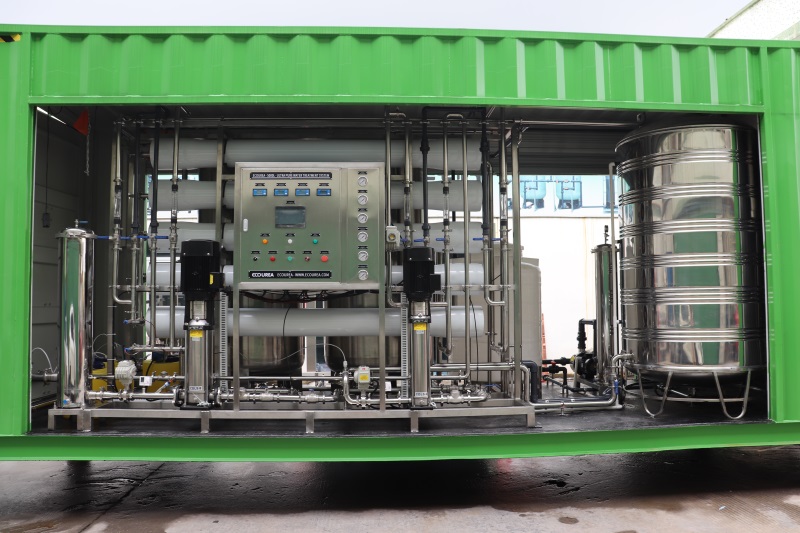 Container equipment
We can deliver our systems in insulated (20 or 40 ft) containers. Containerization includes all piping and fittings connected, all cables and wires connected to instrument and control cabinet. This is a “plug and play” unit supply.
Container equipment
We can deliver our systems in insulated (20 or 40 ft) containers. Containerization includes all piping and fittings connected, all cables and wires connected to instrument and control cabinet. This is a “plug and play” unit supply.
The container will be mounted with one side door, one inlet/oulet (terminal point), one roof hatch, one side door and floor drainage. A sun roof can be offered on request to limit the inside temperature in the container if extreme conditions have to be considered.
The container can be air cooled on request. The Airco is a split-unit and the outdoor part will be placed next to the container.

Each plant is fully 3D-design prior to construction. Chemcial room separated from main equipment room
The design of the water treatment plants is always custom made and is subject to modifications depending on the water quality.
Reverse Osmosis units often required pre-treatment for the following parameters:
- Suspended solids
- TOC, COD/BOD, hydrocarbons
- Iron and manganese
- Hardness
Lenntech provides all kinds of pre-treatment required before your RO, according to your water analysis and process requirements.
Plant Size / Standard container
Depending on the plant size, containerised plant in 20 or 40 ft container(s) are available
Containerized RO Purification Systems Working principle:
Water Treatment Plant
Reverse osmosis technology sewage water treatment plant
With the report of raw water analysis and the different requirements in different field, we can make a appropriate design for you.
1) Adopts RO membrane from VONTRON, which can remove 99.7% inorganic salt, heavy metal ion and completely get rid of colloid, microbiology organic materials, germ, protozoa, pathogens, bacteria, inorganic chemical and so on.
2) No need to add any chemicals, stable pure water quality, and no pollution drained, low produce cost.
3) Equipped with pretreatment system, such as active carbon absorption filter and refined quartz sand filter
4) 304 stainless steel rack and pipe accessories connection.
5) Equipped with auto pressure protection system and on -line monitor.
6) Automatically and manually wash RO membrane. Also the design of washing the RO membrane is by chemical solution (citric acid or sodium hydroxide optional)
7) The lifespan of the whole system is long, operation simple, the applicability is strong.Hot Sale Reverse Osmosis System
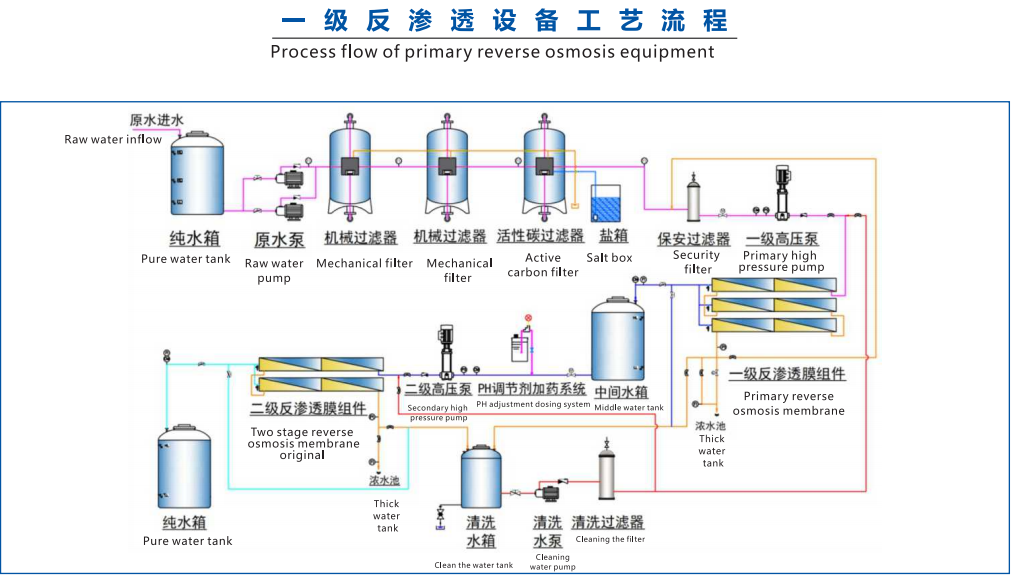
Benefits of our containerized equipment:
- Engineered to reduce overall project costs, including labor related fees
- Reduction in downtime and operational costs due to backup equipment
- Greater productivity and less project management issues
- No uncertainty as a result of fast and guaranteed delivery
- Safe and easy installation
- Structurally sound units, with 100% safety
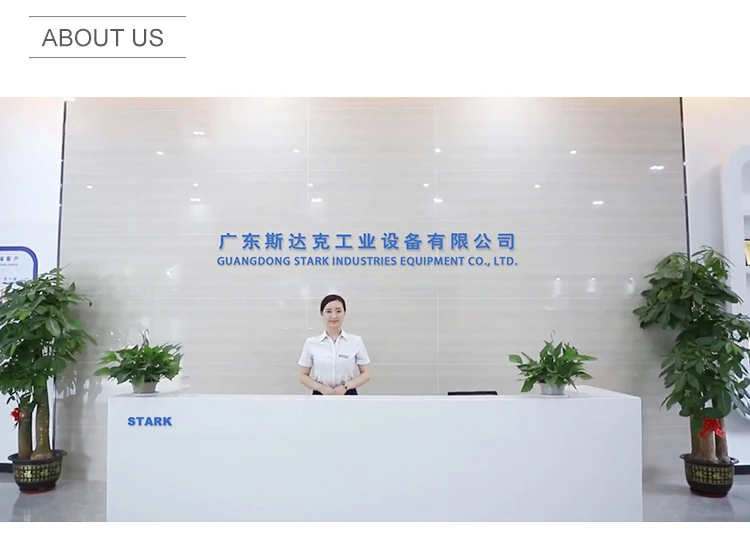
Click here to know more
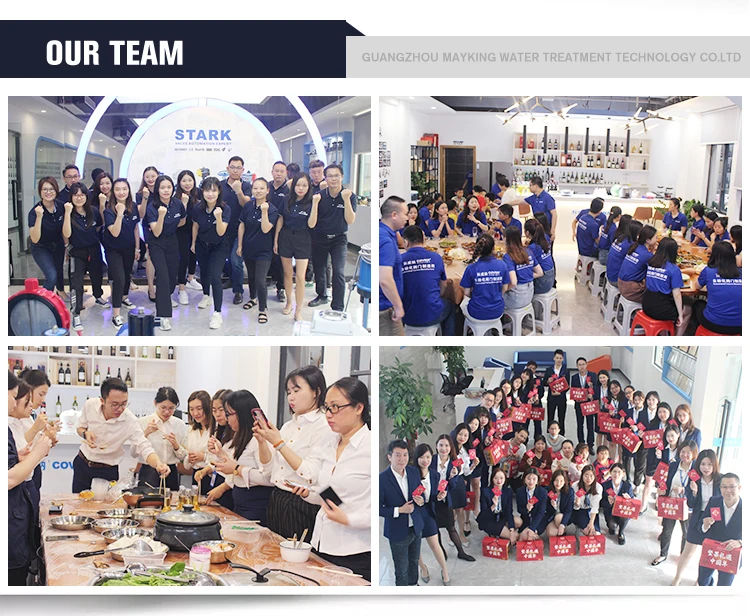
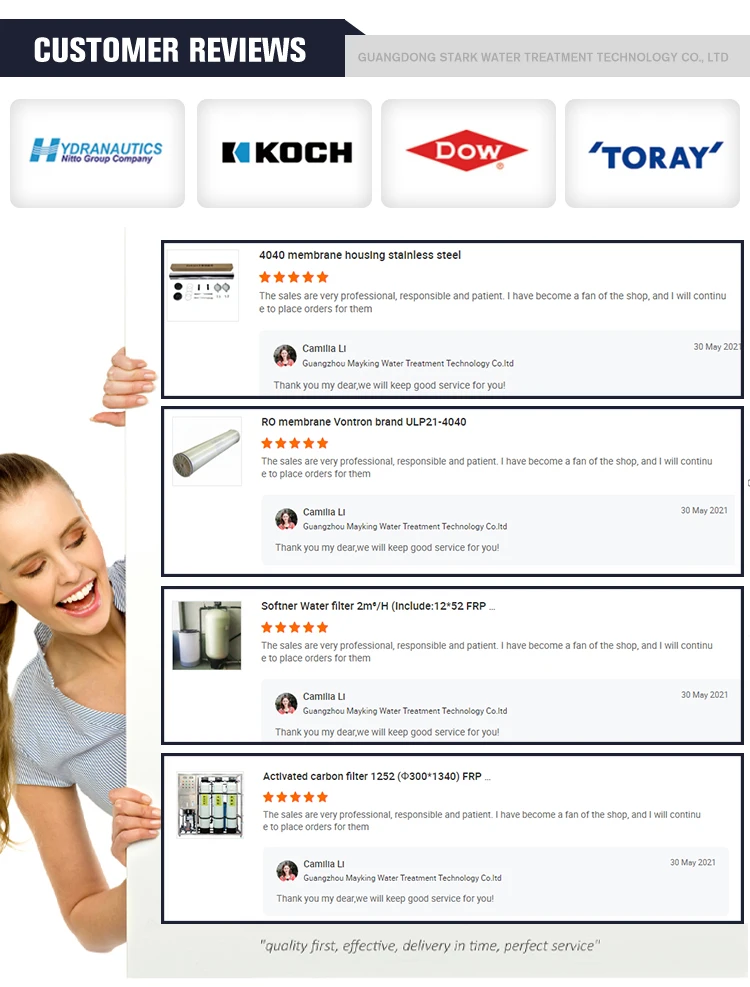

FAQ
1.Are you manufacturer or trading company ?
Yes, we are manufacturer. Our factory is in Guangzhou Baiyun and it is very near to Baiyun airport. When you come to China, you can visit our factory.
2.What do I know before buying reverse osmosis water plant ?
1. Pure Water Production Capacity (L/day, L/Hour, GPD). 2. Feed Water TDS and Raw Water Analysis Report (prevent fouling and scalling problem) 3. Iron and Manganese must be removed before raw water enter reverse osmosis water filtration membrane 4. TSS (Total Suspended Solid) must remove before industrial water purification system’s membrane. 5. SDI (Silt Density Index) must be less than 3 6. Must be sure your water source does not have oil and grease 7. Chlorine must be removed before industrial water treatment system 8. Available electrical power voltage and phase 9. Layout of place for industrial RO reverse osmosis system
3.What does TDS mean ?
First, we see the full description of abbreviation. T means total, D means Dissolved and S means Solids. Total Dissolved Solids. Why it is important for us ? World Health Organization (WHO) Guidelines for Drinking Water Quality The palatability of water with a total dissolved solids (TDS) level of less than about 600 mg/l is generally considered to be good; drinking-water becomes significantly and increasingly unpalatable at TDS levels greater than about 1000 mg/l. The presence of high levels of TDS may also be objectionable to consumers, owing to excessive scaling in water pipes, heaters, boilers and household appliances
4.What is the difference between UF and RO membrane ?
Reverse osmosis and ultrafiltration, commonly referred to as RO and UF, use membrane technology. The reverse osmosis system uses a semipermeable membrane that separates 99.99% of inorganic dissolved material from the water molecule. The ultrafiltration system uses a hollow fibre membrane to stop solid debris and microscopic contaminants. UF is a mechanical filter, but it can filter water down to the superfine level of 0.01 micron, hence the name ultrafiltration. Ultrafiltration is a filter system, while reverse osmosis is a process where molecules are separated.











